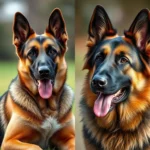
Introduction
Dogs have been our companions for thousands of years, serving various roles from herding livestock to providing companionship. With over 340 recognized dog breeds worldwide, each breed carries unique characteristics and traits that make them special. Understanding these specific breeds is essential for potential dog owners, as it helps in selecting a dog that fits their lifestyle and needs.
One breed that stands out for its intelligence, loyalty, and herding abilities is the Catalan Sheepdog. Originating from Catalonia, Spain, this breed has a rich history and has been an essential part of agricultural practices in its homeland. The purpose of this article is to provide a comprehensive overview of the Catalan Sheepdog, including its history, characteristics, and care requirements.
Overview of Dog Breeds
What is a Dog Breed?
A dog breed is a specific type of dog that has been selectively bred for certain traits and characteristics. These traits can include physical features like size and coat type, as well as behavioral traits such as temperament and energy levels. Understanding these characteristics is crucial for prospective owners, as they significantly influence how a dog will fit into a household.
Classification of Dog Breeds
Dog breeds are typically categorized into various groups based on their original purpose. The main classifications include:
- Working Group: Dogs that perform tasks such as guarding and pulling sleds.
- Herding Group: Breeds that assist in herding livestock, like the Catalan Sheepdog.
- Sporting Group: Dogs bred for hunting and retrieving game.
- Hound Group: Breeds that excel in tracking and hunting.
- Terrier Group: Small, feisty dogs initially bred for hunting vermin.
- Toy Group: Small companion dogs.
- Non-Sporting Group: Diverse breeds with varying characteristics.
- Miscellaneous Group: Breeds that are still being recognized.
Understanding these classifications helps potential owners identify a breed that aligns with their lifestyle and preferences.
The Catalan Sheepdog: A Closer Look
History and Origin
The Catalan Sheepdog has its roots in the Catalonia region of Spain, where it has been utilized for centuries to herd sheep and protect livestock. Historically, these dogs were essential to shepherds, assisting in the management of flocks in the rugged terrain of the Pyrenees. Their herding skills and protective nature have made them invaluable to farmers and ranchers in rural areas.
Physical Characteristics
The Catalan Sheepdog is a medium-sized dog, typically standing between 17 to 22 inches tall and weighing between 30 to 50 pounds. They have a robust and muscular build, well-suited for their working role. Their coat is dense and can come in various colors, including shades of gray, black, brown, and fawn, often with white markings.
Grooming requirements are moderate; regular brushing is necessary to manage shedding and keep their coat healthy. Due to their thick fur, they are more suited to cooler climates.
Temperament and Behavior
Known for their intelligence and loyalty, Catalan Sheepdogs are highly trainable and eager to please. They possess a strong herding instinct, which can sometimes manifest as a tendency to chase smaller animals, including cats. Their energy levels are high, meaning they require regular exercise and mental stimulation.
These dogs are generally good with children and can be protective of their family. Early socialization is key to ensuring they develop a well-rounded temperament, allowing them to interact positively with other pets and people.
Health and Lifespan
Like many breeds, the Catalan Sheepdog is prone to certain health issues, including hip dysplasia and eye problems. Regular veterinary check-ups can help catch any health concerns early. On average, these dogs have a lifespan of 12 to 15 years, which can be influenced by factors such as diet, exercise, and genetics.
Lifestyle and Care for a Catalan Sheepdog
Ideal Living Conditions
Catalan Sheepdogs thrive in environments where they have ample space to run and play. They are not ideally suited for apartment living unless they receive plenty of exercise. A house with a secure yard is the best setting for this breed.
In terms of exercise, Catalan Sheepdogs require at least an hour of vigorous activity each day. Activities can include walks, runs, or playtime in a fenced area, as well as mental exercises like puzzle toys to keep their minds sharp.
Nutrition and Diet
A balanced diet is essential for the health and well-being of a Catalan Sheepdog. Owners can choose from several diet types, including high-quality kibble, raw food, or homemade meals. It’s important to ensure that their diet is rich in protein and contains essential nutrients.
Portion sizes should be adjusted based on the dog’s age, weight, and activity level, and feeding should be scheduled at regular intervals to maintain consistent energy levels.
Grooming Requirements
Grooming a Catalan Sheepdog is crucial for maintaining their coat and overall health. Generally, they should be brushed at least once a week to prevent matting and reduce shedding. Bathing should be done as needed, typically every few months or when they get particularly dirty.
Essential grooming tools include a slicker brush and a comb to help maintain their dense coat. Regular dental care and nail trimming are also important aspects of their grooming routine.
Training and Socialization
Importance of Early Training
Starting training early is critical for the Catalan Sheepdog, as they are intelligent dogs that thrive on learning. Early training helps establish good behavior patterns and strengthens the bond between the dog and its owner.
Recommended Training Techniques
Positive reinforcement methods are highly effective for training Catalan Sheepdogs. This can include treats, praise, and playtime as rewards for desired behaviors. Given their herding instincts, it’s essential to incorporate activities that channel their energy and intelligence, such as agility training or herding exercises.
Socialization Strategies
Socialization is vital for a Catalan Sheepdog to develop into a well-adjusted adult. Exposing them to various environments, people, and other animals from a young age helps them become more adaptable. Recommended activities include puppy classes, dog parks, and playdates with other dogs.
Common Misconceptions about the Catalan Sheepdog
Myths vs. Facts
One common myth about the Catalan Sheepdog is that they are aggressive due to their protective nature. In reality, they are affectionate and loyal companions when properly trained and socialized. Another misconception is that they require extensive grooming; while they do shed, regular brushing can manage their coat’s needs effectively.
Understanding the Breed’s Needs
It’s crucial for potential owners to understand that the Catalan Sheepdog requires an active lifestyle and mental stimulation. They are not suitable for sedentary individuals or families who cannot commit to regular exercise and engagement.
Conclusion
The Catalan Sheepdog is a remarkable breed known for its intelligence, loyalty, and herding prowess. With a rich history and unique characteristics, this breed can be a fantastic companion for the right family. Understanding the specific needs of the Catalan Sheepdog, including their exercise, grooming, and training requirements, is essential for responsible pet ownership.
If you’re considering adding a dog to your family, the Catalan Sheepdog deserves a spot on your list of potential breeds. They offer a unique blend of companionship and working ability, making them a perfect fit for active families or individuals.
FAQs about the Catalan Sheepdog
- What is the average lifespan of a Catalan Sheepdog?
-
The average lifespan ranges from 12 to 15 years, depending on health and care.
-
Are Catalan Sheepdogs good with children?
-
Yes, they are generally good with children and can be protective of their family.
-
What type of training do Catalan Sheepdogs require?
-
They benefit from early training and socialization, with positive reinforcement methods being the most effective.
-
How much exercise does a Catalan Sheepdog need?
-
A minimum of one hour of vigorous exercise each day is ideal.
-
Do Catalan Sheepdogs shed a lot?
- They do shed, so regular grooming is necessary to manage their coat and reduce shedding.
In summary, the Catalan Sheepdog is a breed that combines intelligence, loyalty, and herding skills, making it a wonderful addition for active dog lovers. With the right care and training, they can thrive in a loving environment, providing companionship and support for many years.









